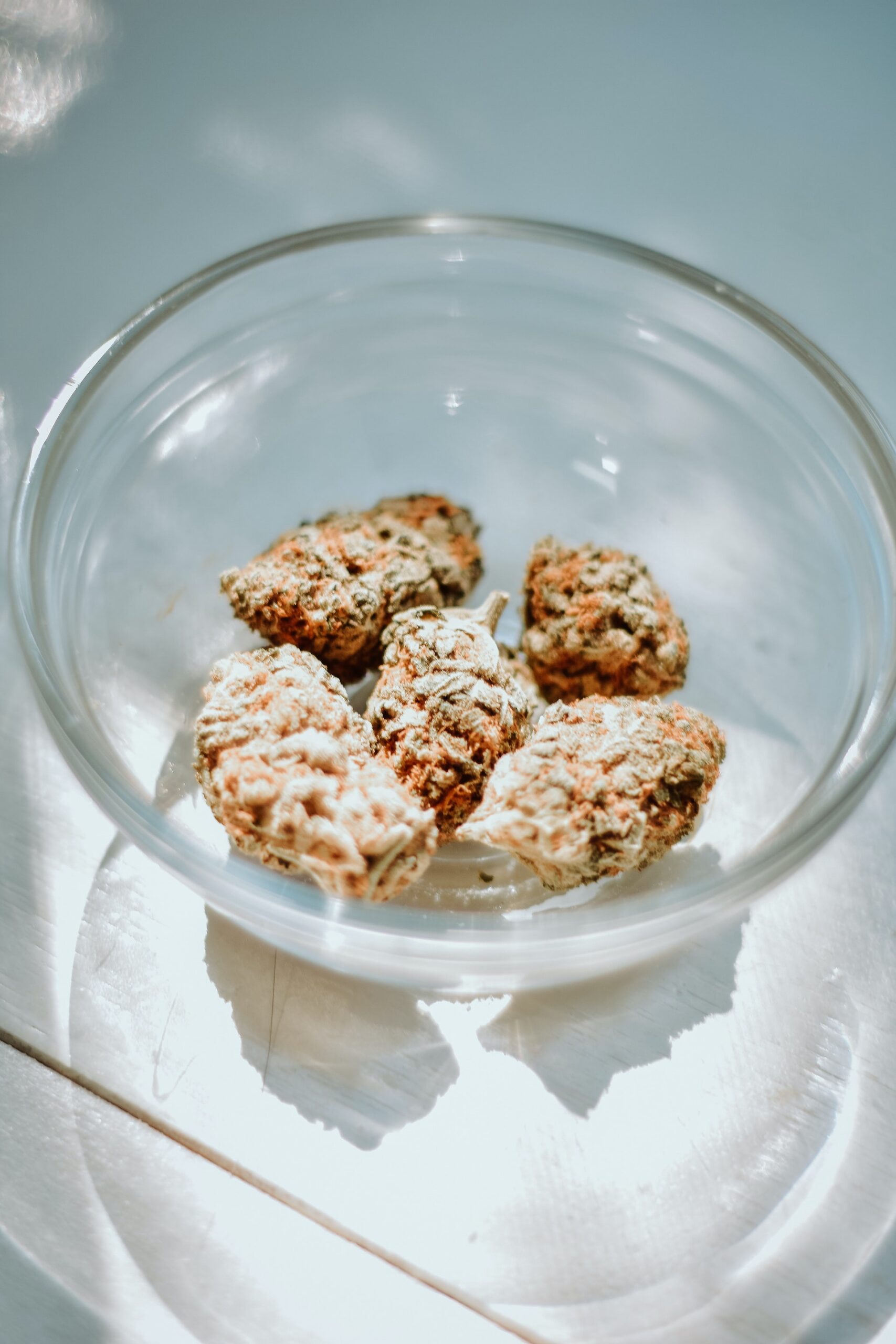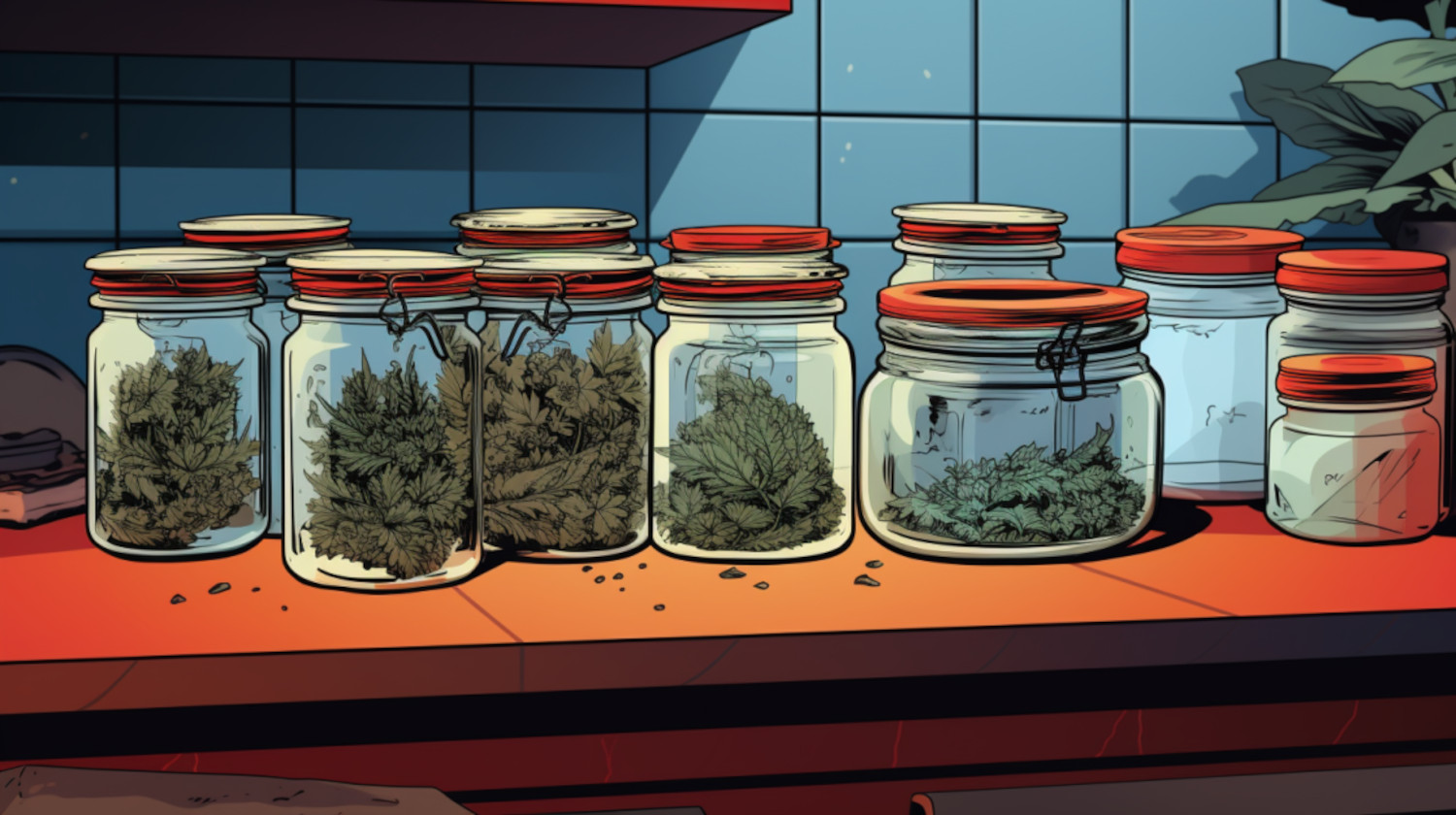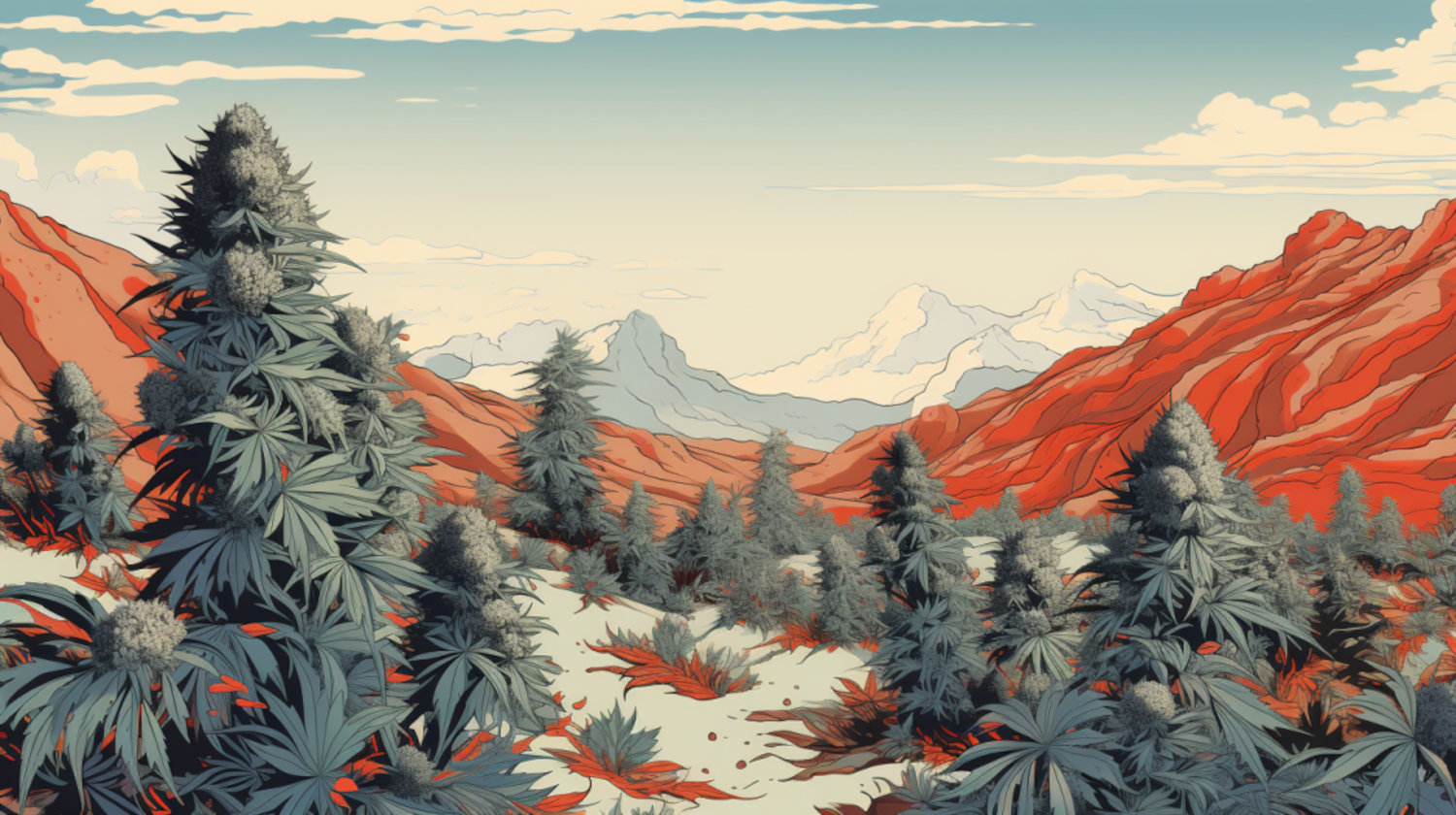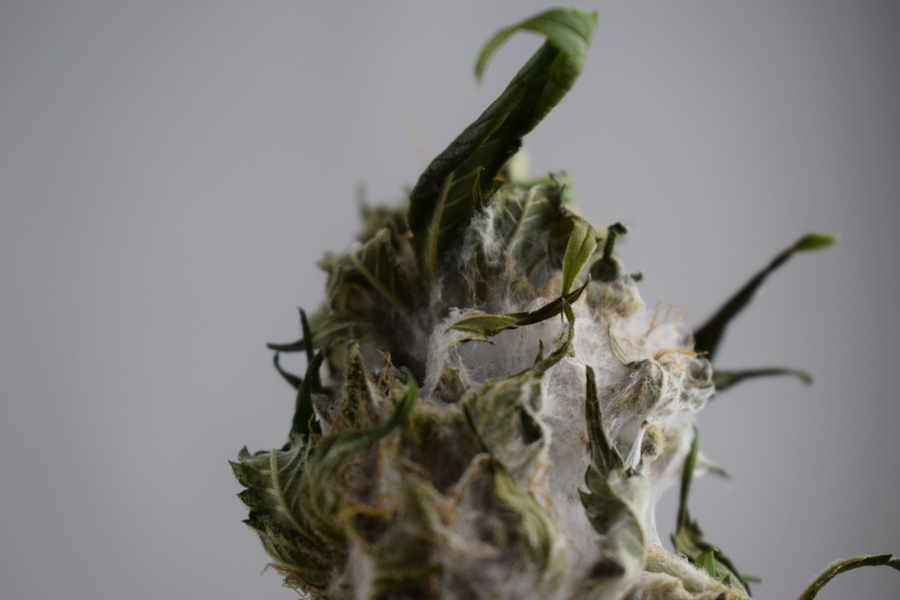Old cannabis happens from time to time. It's not ideal, but hey, cut yourself some slack. Maybe you bought too much at the dispensary. Perhaps you forgot about a jar of pot somewhere. Or maybe you left your stash in a warm, sunny place, expediting the aging process that typically takes months if not years. In any case, even cannabis connoisseurs can end up with stale, dried-out, or even moldy weed.
Now that we've addressed the moldy green elephant in the room let's talk next steps.
This article will explain how it happens, what to look out for, and how to best prolong the inevitable.
When Does Weed Go Bad?
The timeline for stale weed and its onset can vary. Depending on the strain, curing, storage methods, and other possible factors, your stash can go south in a few months or a year (possibly two years, according to some claims).
Rather than sticking to a grocery store style “best by” date, you can use a few indicators to spot old pot:
- Flavor loss or change
- Aroma loss or change
- Mold on flower or derived products
- Differences in regular effects after consuming
Those indicators apply across the board to pot products. However, expiration timelines can be altered by consumption type. For example, flower can last 6 to 12 months on average if stored properly. Cartridges can last several months, while topicals tend to last a year to two years. Edibles may last several days to months, depending on product ingredients. In theory, you could have a product like infused honey, where the food never expires or takes years to do so. But while the food may still be good, cannabinoids may break down over time, and edibles may not deliver the desired experience if they’re past their prime.
How To Tell if Weed is Old or Bad
Spotting old weed doesn't take a trained eye. Once the freshness begins to fade, the plant begins to convert in a number of ways, both obvious and subtle.
Be on the lookout for the following signs that indicate your pot is losing or has lost its quality:
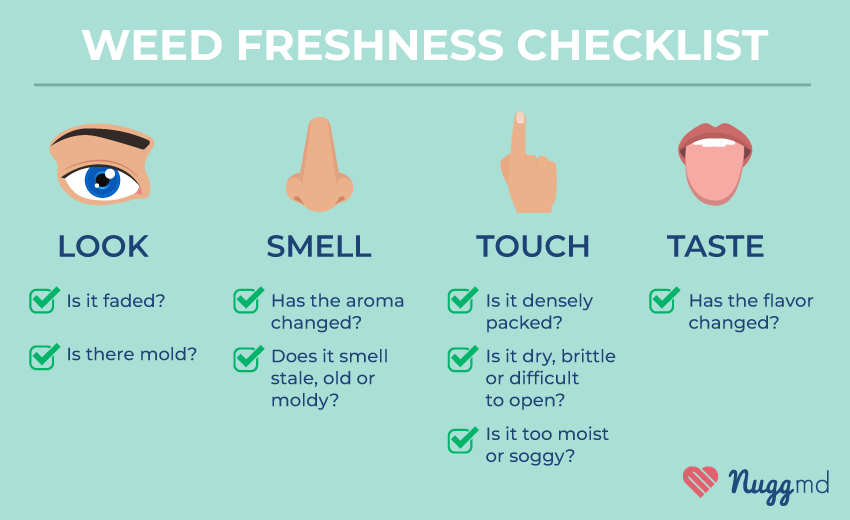
Sight Check: Have you noticed any changes to your flower? Has its vibrance faded? Has any white, fur-like matter appeared? If your nugs look muted or dull, you probably have old or moldy weed.
Smell: If your product's aroma has changed, especially to a moldy weed smell, your plant's terpenes may have seen their best days go past them.
Touch Factors: Is your once moist flower now dried-out weed? If you find your pot dry or brittle, consider it past its peak freshness. On the other hand, you may also find soggy weed, which often means a producer didn't adequately dry it after harvesting.
How The Bud Breaks: If your weed snaps rather than pops, it's a sign that the flower has dried out. It may not be easy to hear how your nugs break, but you can feel the difference. Slowly snap the flower in two when in doubt and note how it breaks apart.
When In Doubt, Taste It Out: If none of the following tips you off, the taste may be the final factor. Much like the smell, if your plant's original flavor diminishes or changes, it's a sure sign that the pot's gone bad or is on its way to such status.
Before you bin it, don't write off your dried cannabis flower just yet. Using a humidor or distilled water, you can rehydrate weed as a way to regain the plant's freshness.
What Happens if You Smoke Old Weed?
It's safe to say that pot doesn’t age like fine wine. Consuming old weed is sure to dampen the experience and your desired effects. Thankfully, none of these adverse effects appear life-threatening. Still, each is unwanted for various reasons. They include:
- Lack of Flavor and Taste: As mentioned before, a loss of flavor or smell is a classic sign that your cannabis has turned for the worse. At one point or another, you'll likely notice that decline in aroma, typically occurring when breaking up the bud, giving it an up-close whiff, or lighting up. You'll obviously taste any flavor loss or changes when consuming the product. Neither of these outcomes should harm you but will likely diminish the overall experience.
- Decline In Potency: Cannabinoid potency decreases as it ages. The longer you wait to consume, the less likely your cannabis product is to deliver the listed effects. Research has found that cannabis loses 16% of its potency after one year. The following year, it lost 26%, then 34% after three years. The longer you wait to consume your cannabis, the less potent it will be.
- Rise In Sleep-like Effects: If you let your flower age too long, the expected uplifting effect in your favorite strain may do the opposite. Cannabis converts more than once in its lifetime. Before heating or decarboxylation, THC is in its acidic form, THCA. If that converted cannabinoid isn't consumed in a reasonable time, it can further degrade into the cannabinoid CBN.
Ingesting or inhaling stale or old cannabis doesn't appear to lead to severe adverse effects. However, underlying conditions could be affected by cannabis use, especially if consumed past its ideal use date.
The more pressing concern likely stems from consuming moldy weed. Cannabis or otherwise, consuming mold can lead to uncomfortable experiences, including:
- Shortness of breath
- Nausea
- Vomiting
- Diarrhea
- Increased body temperature
Smoking moldy cannabis may lead to serious or even potentially fatal infections, like fungal pneumonia, for those with weakened immune systems.
What to Do With Old Weed
What can you do if you find a container of cannabis flower that’s past its prime?
First, check for mold and make sure the stash is still safe to consume. If everything checks out, you have a few easy options for what to do with old weed.
- Rehydrate. If the flower feels dry but has retained some of its aroma and flavor profile, consider rehydrating it for a better consumption experience.
- Make Edibles. Old cannabis flower that you may not want to smoke is a prime candidate for cooking with cannabis.
- Try Vaping. If you have a dry flower vaporizer, you can get the most out of your remaining stash while reducing some of the harshness on your throat or lungs that you might expect from smoking old flower in a bowl or pre-roll.
- Make Your Own Concentrates. For consumers who enjoy vaping but don’t have a dry flower vaporizer, there are ways to use their stash (new or old) to make their own concentrates at home.
Conclusion
Every type of cannabis will expire if left unconsumed long enough. It will take time, likely months or even years, but all cannabis products will eventually see an end date. You can extend your product's shelf life with proper storage methods.
Keeping cannabis stored adequately for freshness doesn't take much effort or cost. With just a few items, you can create an ideal storage system for your cannabis, whether it be flower, vape cartridges, edibles, topicals, or otherwise. When selecting your cannabis storage space, consider the following factors:
- Temperature: Cannabis thrives in cool places with little exposure to humidity, heat, and the sun. Find a cool place for your product: around room temperature should be ideal. Avoid colder places unless you plan on flash-freezing your recently harvested flower. While a great idea, few of us reading will likely undertake that effort, which is often reserved for expert extractors.
- Location/Sun Exposure: Once harvested, your cannabis shouldn't have much exposure to the sun. Being out in the sun is one proven way to convert THCA to THC. Leaving cannabis out too long can also facilitate THC converting to CBN more quickly. Instead of a sunny spot, store your nugs and other pot products in a cool, dark place.
- Container Used: Air exposure also helps speed the aging and conversion processes. Use an airtight container to keep the elements out. UV-protected glass is often the most recommended option for keeping air and sun rays at bay. UV glass also allows some folks to leave their cannabis out in the open rather than in a dark space (but that's up to you to decide).
The information in this article and any included images or charts are for educational purposes only. This information is neither a substitute for, nor does it replace, professional legal advice or medical advice, diagnosis, or treatment. If you have any concerns or questions about laws, regulations, or your health, you should always consult with an attorney, physician or other licensed professional.

